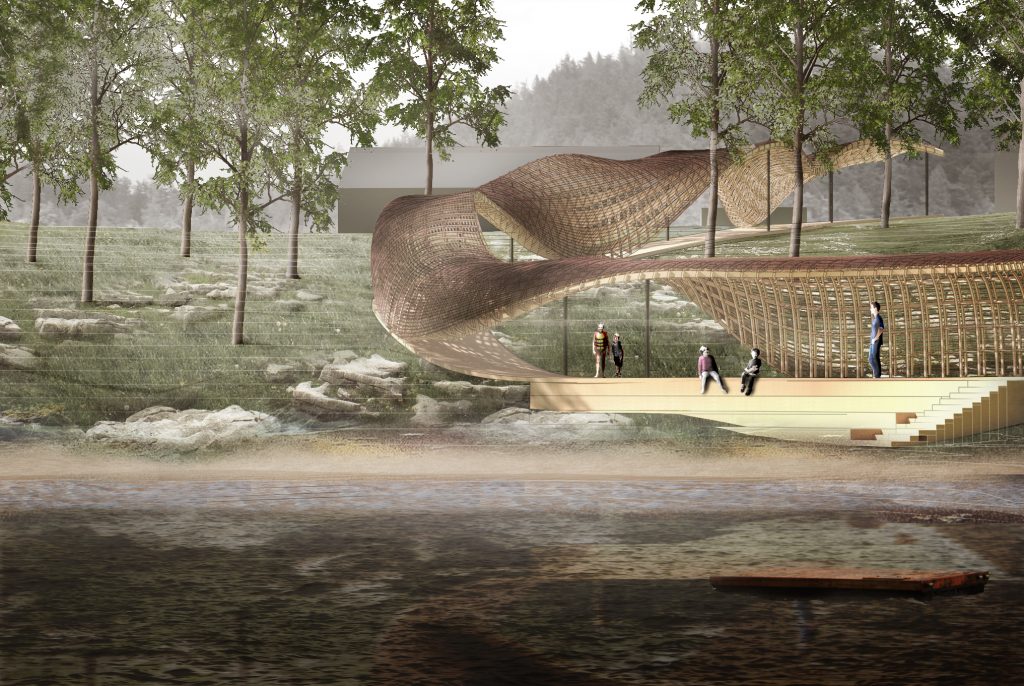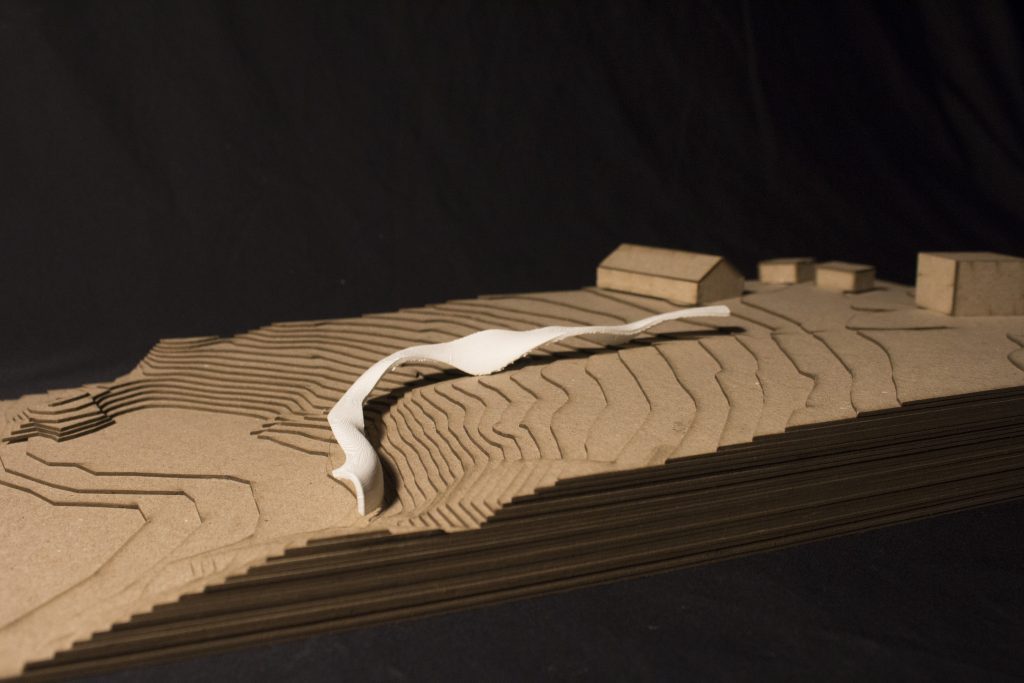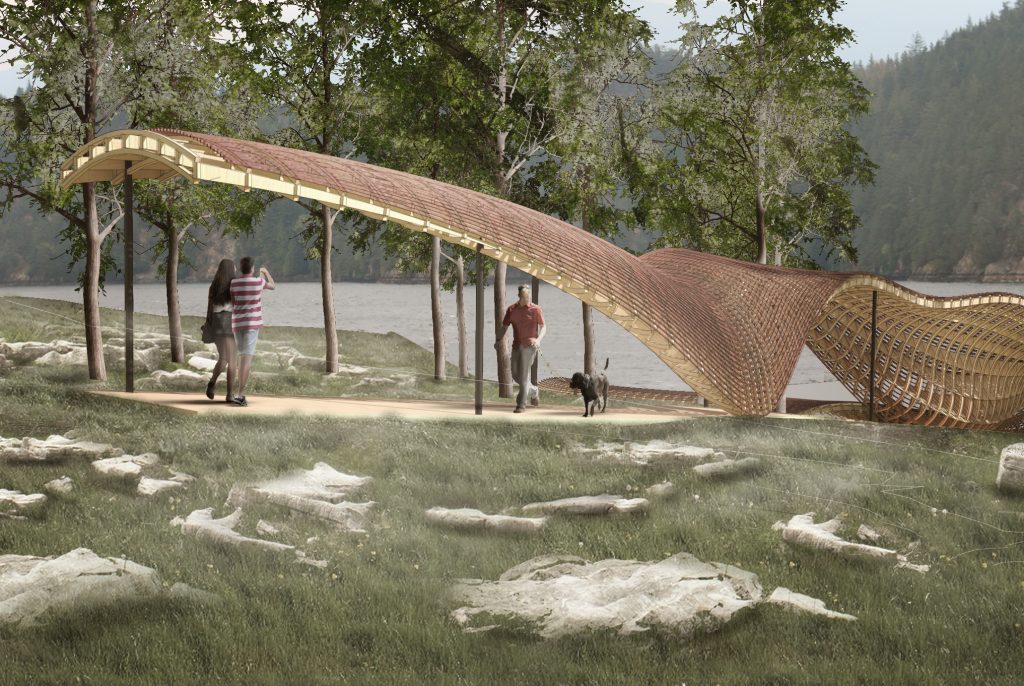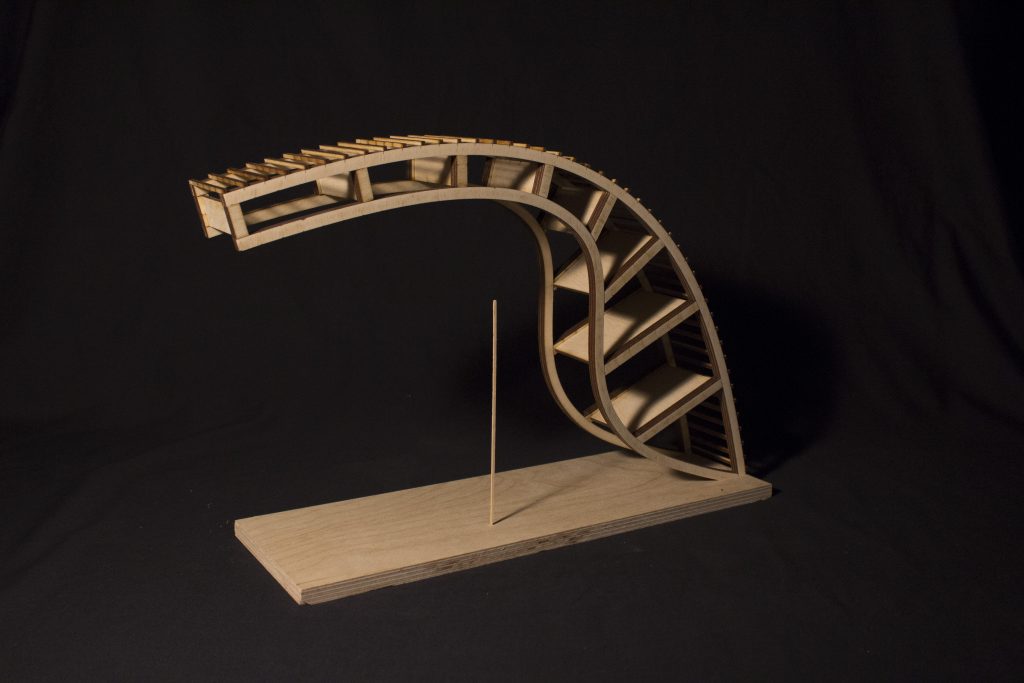By Laurie Elfassy and Philippe Le Quellec

We began this project with a few initial intentions, which drove our design process. To begin, we wished to design a structure that worked as a pathway leading all the way down to the waterfront, in which the storage units are a procession along this pathway. We desired a form that expressed fluidity and the image of cascades. Furthermore, we searched for a structure that combines the roof and wall, to further the concept of fluidity, as well as a structure that could incorporate the functional needs as a storage unit.
After several form finding explorations, guided by the initial intentions stated above, we developed a system where our structure could touch ground at three instances – these moments signifying the storage units. We designed a very open entrance, signified by a long overhang, which leads to the first storage compartment. This first storage compartment has its back facing the wedding pavilion to be a nicer backdrop. The structure ends by curling around the edge of the topography, with platforms leading down to that water. Here, the children can be regrouped before and after going into the water, as well as photos can be taken of wedding parties for example.
This main issue of this project to resolve was how a form that wants itself to be a surface can become a 3D volume only at certain moments (where the storage is). We tested several structures, such as waffle structures, which we believed to be too thick and heavy for this design. We decided to look at the grid shell structure, a structure often seen used for parametric surfaces. In deconstructing the composition of this structure, we were able to design these moments where the structure ‘bubbles out’ by having the two vertical structural elements split up, as seen in the section model. As seen in the exploded isometric, we broke down the structure into several smaller parts, which can easily be assembled offsite. Due to this broken down structure, the horizontal structural elements do not need to endure too much torsion, even in the most intense areas. We opted for horizontal laths to cover the structure, due to the fact that it really reinforced the fluidity of the structure down the hill. The horizontal laths also helped to integrate this unique structure into its context, due to the fact that it created a less interrupting cohesiveness to the whole structure. Columns are used to support the structure. They are thin steel columns, which search to lose themselves in the context of tree trunks.



